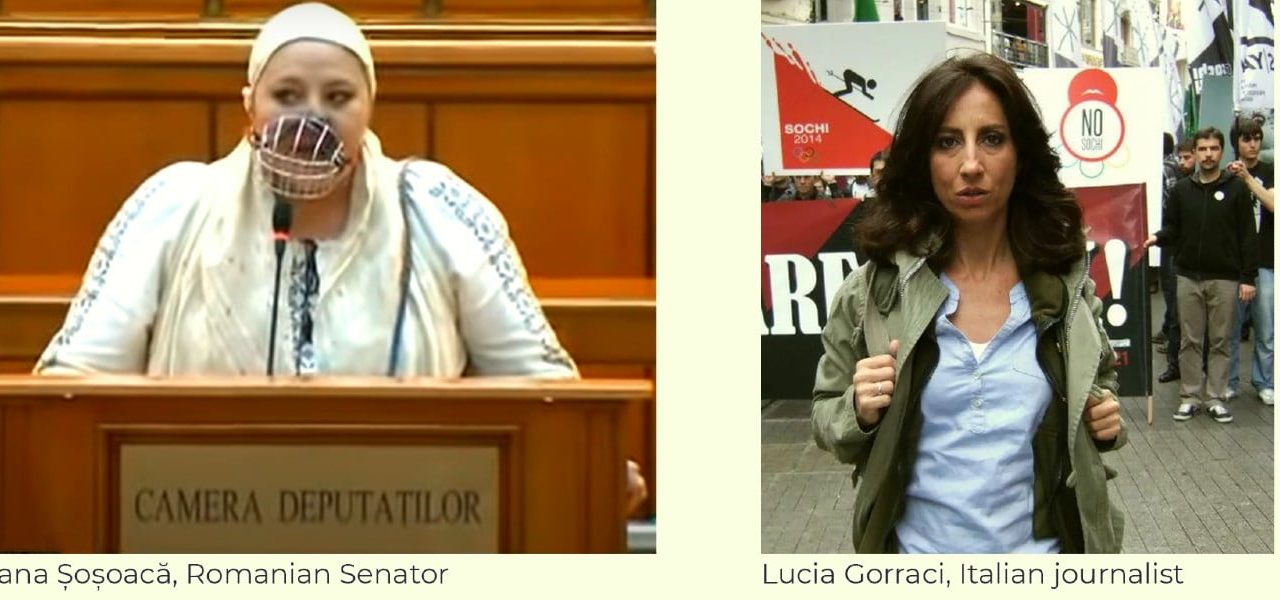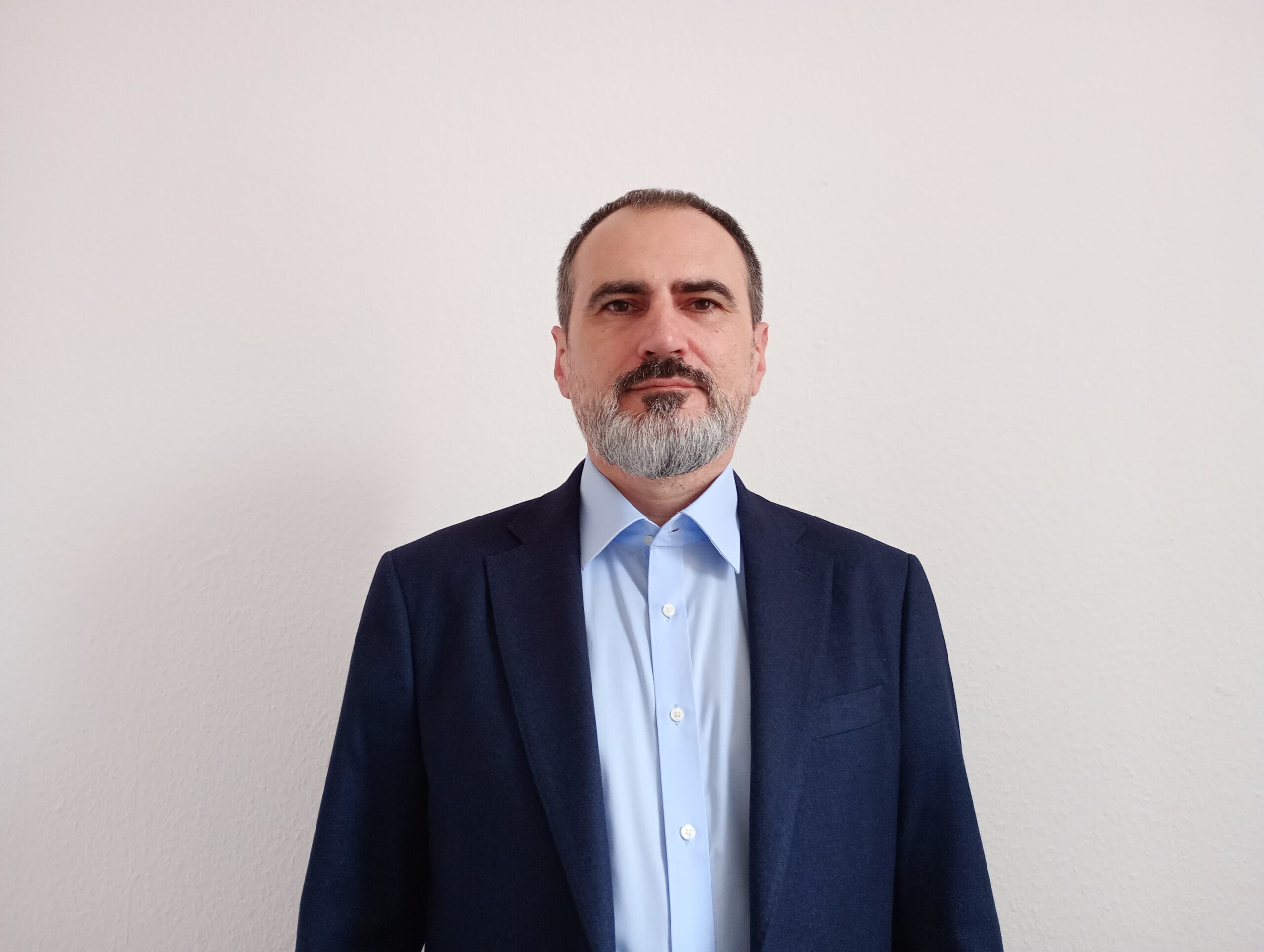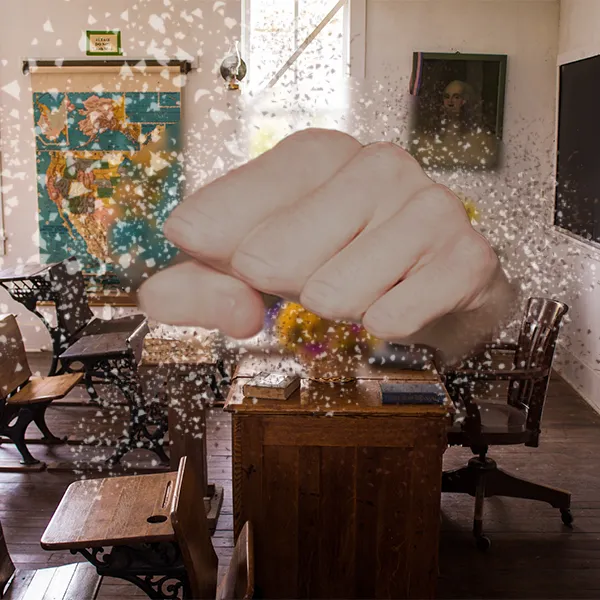On December 13, Romania set a new record for violent politicians acting insanely. Lucia Gorraci, an Italian journalist, wanted to interview Romanian MP Diana Șoșoacă about the vaccination campaign. When Gorraci and her team entered Șoșoacă’s office, they were accompanied by Romanian journalist Delia Marinescu, who had arranged the meeting. They began the interview, but Diana Șoșoacă interrupted and told them they were not who they claimed to be, and she asked them to leave her office. Șoșoacă obstructed the journalists’ exit by positioning herself in the doorway seconds after they attempted to leave. Lucia Gorraci was able to escape, but Diana Șoșoacă locked the door of her office, preventing the rest of Gorraci’s crew and Delia Marinescu from leaving. Șoșoacă began filming and dialed 112, the Romanian emergency number, claiming that people in her office were harassing her. The police arrived minutes after the call was placed. Lucia Gorraci met with the police officers and attempted to explain why her crew was imprisoned in Șoșoacă’s office. When Gorraci returned with the police officers, Silvestru Șoșoacă, Diana Șoșoacă’s husband, grabbed the Italian journalist’s hand, punched her, and bit her hand!
But wait, there’s more! The police officers took the journalists to the station, searched them, and detained them for several hours. They were only released from police custody after the Italian embassy intervened.
This bizarre story sparked international outrage. The Italian press published dozens of stories about how the Romanian senator Diana Șoșoacă treated the journalists. Lucia Gorraci gave an interview to Corriere della Sera, a mainstream Italian publication, hours after arriving in Italy, saying she does not want to generalize about the Romanian people or the Romanian police and that she expects justice to prevail. Șoșoacă’s behavior is now being investigated by the police. In addition, one of the officers on the scene filed a criminal complaint against Diana Șoșoacă’s husband, Silvestru Șoșoacă, for hitting him. Silvestru Șoșoacă was immediately placed under judicial control as a result. He appealed the decision, but the Romanian court dismissed his appeal. He also made rather vulgar sexist remarks about the Italian journalist Lucia Gorraci, claiming that she is “too bony” and that he likes “voluptuous women.”
Romanian Prime Minister Nicolae Ciucă issued an official statement condemning the incident and expressing his discontent with the use of violence when people hold opposing views.
According to the Ministry of Foreign Affairs in Bucharest, the Italian authorities have requested information on the situation from the Romanian Embassy in Rome.
The Romanian Ambassador in Rome informed the Italian side that the Romanian criminal investigation authorities have launched an investigation to determine the details of the incident and, if necessary, take appropriate legal action.
I’ll try to provide some context for this incredible episode in Romania’s recent history. To begin with, you may be wondering why the Italians wanted to run a story about anti-vaccination movement in Romania. One of the reasons, aside from the fact that Romania appears to be the epicenter of European anti-vaccination attitudes, is that Romanians constitute Italy’s largest migrant community. And since they are refusing vaccines, the right-wingers in Italy raised the slogan of expelling the Romanians. This incident only serves to amplify the anti-Romanian sentiment in that country. This is probably why, when interviewed by Corriere della Sera, one of the first things Lucia Gorraci said was that she is not generalizing the incident and does not consider it to be symbolic for the entire Romanian society, nor does she consider the Romanian police’s reaction to being emblematic for all security forces.
Things are a little more complicated in Romania when it comes to reactions. First, we must explain why Diana Șoșoacă is so successful and how she was able to gain a seat in the Romanian parliament. She was a member of The Romanian People’s Party, a right-wing extremist party that formed an alliance with another right-wing party, The Alliance of the Union of Romanians, and received 10% of the vote in the most recent parliamentary elections. Diana Șoșoacă is heavily reliant on social media to increase her popularity. She does Facebook Lives in which she verbally abuses people and acts out her rage. This September, she traveled to a small village in Eastern Romania to visit the vaccination center. She began yelling at an elderly woman and others waiting in line for vaccines. She accused the elderly lady of receiving a vaccine but failing to attend church.
When Senator Diana Șoșoacă exhibits such attitudes, the public becomes very excited because they believe she is ‘genuine’ or ‘real.’ A few weeks ago she arrived at the Parliament building wearing a muzzle, pretending to be the anti-Covid mask. The public is also enthralled by the weird experience she provides them, giving them the impression that they have power when, in fact, they are just witnesses to violent behavior.
Sputnik Moldova-Romania, a Russian public media outlet, published articles portraying Diana Șoșoacă as a victim and a very important Romanian personality fighting for independence! Several Romanian TV channels promoted the idea that Șoșoacă was the victim of a conspiracy, and, unsurprisingly, many people believe this story. Diana Șoșoacă, in their opinion, is a true hero fighting for our country against Western Europe’s hostile moves (sic!).
There has been a lot of discussion about Russian propaganda in recent years. According to some reports, this type of propaganda encourages the most extremist elements of society to amplify their messages in order to create destabilization.
As top former employees revealed, this could be perfectly true for social media platforms that monetize dissent, polarization, and emotional engagement. But just because social media is doing it doesn’t mean the Russians aren’t. They are, and now that Romania is in the grip of a terrible economic and health crisis, their ideas are gaining traction. We have journalists like Cosmin Gușă, Victor Ciutacu, Liviu Alexa, and Sorin Roșca Stănescu, who are well-known names in the Romanian media arena, amplifying conspiracy theories and conveying controversial messages like the one about Diana Șoșoacă’s alleged victimhood.
There are also international causes that allow extreme anti-vaxxers in Romania to gain such a large platform. NBC ran a story about how the United States is exporting conspiracy theories and how Facebook spent 84 percent of the money destined to combat disinformation in the Western part of the world, leaving only 16% to combat these phenomena elsewhere in the world!
Because, in the eyes of the big tech companies, Romanians are second-class citizens who deserve far less to combat disinformation. How about local efforts to combat it?
Because of a very narrow and naïve perspective on ‘combating disinformation,’ blatant misinterpretations of the facts, such as the one in which Diana Șoșoacă is a victim, are also possible. The Romanian security apparatus’s response to ‘Russian propaganda’ was to produce massive amounts of ‘anti-Russian propaganda.’ Thus, they were able to create a paranoid atmosphere in which everyone was afraid of accusations of being a Russian agent, where there was pathological Russophobia, and where there were few concrete actions against this type of propaganda.
There are at least two issues with this. Instead of creating a safe environment for journalists to criticize both the US and Russia because the primary role of the press is to inform and critically analyze all forms of power, the security apparatus made combating disinformation one of their primary missions. Based on the deeply anti-democratic assumption that journalists and members of civil society cannot be left to do their jobs and respond to such a threat, the Romanian security apparatus began meddling in academic work and promoting figures of prestige who bash Russia every other week, they began promoting journalists who obsessively write against Russia, hyping up hatred and paranoia.
Anti-Russian propaganda is a very profitable business. Costly projects, books, media coverage, in a nutshell, a lot of money and prestige circulated in this area, and some people stood to gain a lot from what was known in Romania as ‘fighting Russian propaganda.’
The only problem with this model of combating foreign state-sponsored propaganda is, aside from its anti-democratic viewpoint, its inefficiency. There is a concrete and specific element that must be addressed when it comes to any form of digital disinformation: fake accounts, fake engagement (likes, shares)! Taking down fake accounts is not censorship, and since we cannot rely on Facebook to do so, the logical conclusion is that countries must devise their own methods. While expensive reports on Russian propaganda have been written, little action has been seen in identifying trolls, removing fake accounts, and tracing sources of funding that could lead to a foreign state’s involvement in the Romanian media arena.
One can only hope that the anti-disinformation strategy will shift away from the completely undemocratic idea of infiltrating civil society and toward taking concrete and specific steps to dismantle propaganda networks that threaten Romania’s stability.
The Barricade is an independent platform, which is supported financially by its readers. If you have enjoyed reading this article, support The Barricade’s existence! See how you can help – here!
Also, you can subscribe to our Patreon page. The Barricade also has a booming Telegram channel, a Twitter account and a YouTube channel, where all the podcasts are hosted. It can also be followed in Rumble, Spotify, SoundCloud and Instagram.










